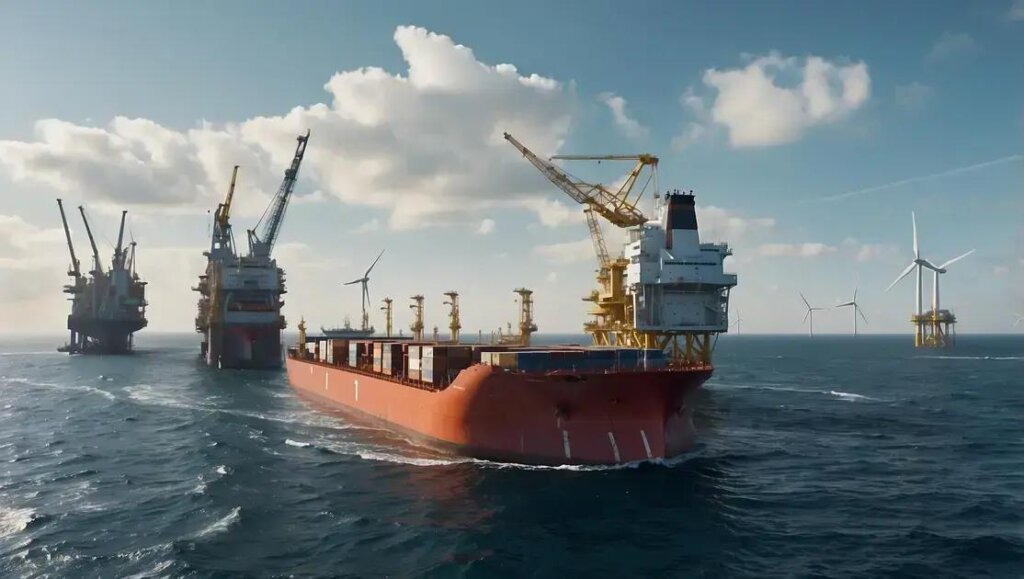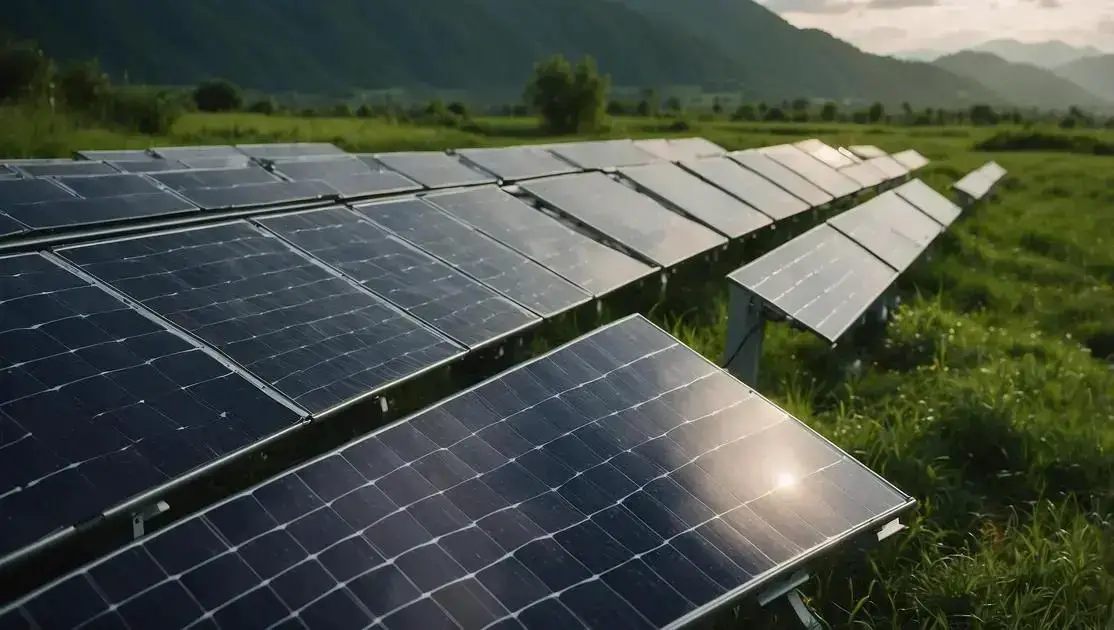Offshore infrastructure plays a crucial role in facilitating international trade and energy production. With advancements in technology and increasing global demand, **offshore infrastructure** is evolving rapidly. This article will delve into the various types of offshore infrastructure, their benefits, challenges, and the future trends shaping this vital sector.
Table of Contents
ToggleWhat is Offshore Infrastructure?
Offshore infrastructure refers to the facilities, structures, and systems that are built in ocean waters to support activities such as oil and gas extraction, renewable energy production, and shipping. These structures are essential for ensuring efficient operations and maintaining the flow of resources from the sea to the mainland.
Key Components of Offshore Infrastructure
Key components of offshore infrastructure include oil rigs, pipelines, subsea systems, and floating platforms. Oil rigs are often large platforms used for drilling and extracting oil and gas. Pipelines transport these resources under the ocean floor to processing facilities on land.
Role in Energy Production
This infrastructure plays a critical role in global energy production. Offshore oil rigs are vital for tapping into underwater reserves of fossil fuels. Similarly, offshore wind farms are part of renewable energy infrastructure that exploits wind currents to generate electricity.
Impact on Economy
The impact of offshore infrastructure extends beyond energy. It supports job creation, contributes to local economies, and enhances international trade by allowing ships to transport goods efficiently to and from ports.
Environmental Considerations
Building and maintaining offshore infrastructure also involves environmental considerations. Minimizing the impact on marine ecosystems is essential to sustain aquatic life and ensure compliance with environmental regulations.
Conclusion
Understanding offshore infrastructure is key to appreciating its importance in supporting various industries. From energy production to environmental sustainability, the role of these structures is multifaceted and necessary for continued advancement in global commerce.
Types of Offshore Infrastructure
There are various types of offshore infrastructure used to support energy production and commercial activities. Understanding these types is crucial to grasping how the industry operates.
1. Offshore Oil Rigs
Offshore oil rigs are structures built over ocean waters to extract oil and natural gas. They come in different designs, such as fixed platforms, floaters, and submersibles. Each type is suited for specific water depths and environmental conditions.
2. Subsea Systems
Subsea systems involve pipeline networks and equipment installed on the ocean floor for transporting oil and gas. These systems are designed to withstand underwater pressures and are crucial for connecting oil rigs to processing facilities.
3. Floating Platforms
Floating platforms are large structures that remain afloat on the ocean surface. They are often used for drilling in deep water. These platforms are equipped with advanced technology for extracting resources and can be moved as needed.
4. Offshore Terminals
Offshore terminals allow for the transfer of oil and gas from ships to land facilities. They include loading and unloading equipment and are essential for shipping resources safely.
5. Wind Farms
Offshore wind farms are positioned in marine areas to harness wind energy. They consist of towering turbines that convert wind into electricity, contributing to renewable energy sources.
6. Support Vessels
Support vessels are essential for maintaining offshore operations. These include supply boats, anchor handling vessels, and crew boats that transport personnel and equipment to and from offshore sites.
7. Communication Systems
Robust communication systems ensure reliable contact between offshore facilities and onshore operations. These systems support data transfer, emergency alerts, and operational coordination.
Application in Other Sectors
The principles behind offshore infrastructure can also apply to sectors like tourism and fishing. Floating hotels and fishing stations leverage similar technologies to enhance marine activities while serving diverse purposes.
Benefits of Offshore Infrastructure
Offshore infrastructure provides numerous benefits that greatly impact the energy sector, global economy, and the environment. Understanding these benefits helps underline the importance of investment in such infrastructure.
1. Enhanced Energy Production
Offshore infrastructure like oil rigs and wind farms significantly boosts energy production. These facilities allow for the extraction of vast resources unavailable on land, which is vital for meeting energy demands.
2. Economic Growth
Investment in offshore infrastructure leads to job creation. New facilities require skilled workers for construction, operation, and maintenance, promoting local economies and contributing to national growth.
3. Diversification of Energy Sources
Offshore infrastructure plays a vital role in diversifying energy sources. By developing wind, solar, and gas-from-sea projects, countries can reduce dependence on fossil fuels and improve energy security.
4. Technological Innovation
Creating and maintaining offshore facilities encourages technological advancements. Innovative technologies are developed to overcome challenges in harsh marine environments, which can benefit many industries.
5. Environmental Benefits
With the shift towards offshore renewable energy, such as wind and solar, offshore infrastructure aims to reduce carbon footprints. It helps in combating climate change and contributes to cleaner energy solutions.
6. Efficient Transportation
Offshore infrastructure enhances shipping logistics. Well-designed terminals and pipelines streamline the transport of goods and energy resources, making it more efficient and cost-effective.
7. Improved Safety Measures
Advanced technology integrated into offshore infrastructure increases safety during operations. Enhanced monitoring systems help prevent accidents and minimize environmental risks, thereby protecting workers and marine life.
8. Strategic Resource Management
By developing offshore resources, countries can manage their natural resources more effectively. This leads to sustainable extraction practices and ensures that future generations can benefit from these resources.
Challenges in Offshore Infrastructure Development
Developing offshore infrastructure presents several challenges that must be addressed to ensure successful implementation and operation. These challenges can have significant implications on project timelines, costs, and overall success.
1. Harsh Environmental Conditions
Offshore structures face extreme weather, high waves, and ocean currents. Building and operating in such conditions require strong materials and innovative designs to ensure safety and durability.
2. High Construction Costs
The initial investment for offshore infrastructure is often very high. Costs involve advanced technologies, specialized equipment, and skilled labor, which can strain budgets and impact project viability.
3. Regulatory Challenges
Compliance with numerous regulations can complicate developments. Different regions have varying laws concerning environmental impact, safety standards, and operational procedures, making navigation challenging.
4. Technological Risks
Innovation is crucial in offshore infrastructure but comes with risks. New technologies may fail or underperform, affecting overall project success and increasing financial burdens if modifications are needed.
5. Limited Access to Resources
In many offshore locations, accessing necessary resources and materials can be difficult. Logistics play a significant role, as transporting these goods to remote sites increases complexity and costs.
6. Environmental Concerns
Developing offshore infrastructure can have environmental impacts, such as affecting marine ecosystems. Addressing these concerns is essential for meeting regulatory requirements and maintaining public support.
7. Safety and Emergency Preparedness
Ensuring the safety of personnel working offshore is a top priority. Companies must invest heavily in emergency preparedness plans and regular training to handle potential accidents or natural disasters.
8. Workforce Challenges
Finding and retaining skilled workers can be difficult in offshore settings. The remote nature of these jobs may deter potential employees, creating staffing shortages that can impact operations.
Regulations Affecting Offshore Infrastructure
Regulations affecting offshore infrastructure are essential for ensuring safety, environmental protection, and operational standards. Various agencies and laws govern these regulations at international, national, and local levels.
1. International Maritime Organization (IMO)
The IMO develops regulations that ensure the safety and environmental sustainability of shipping and marine infrastructure. These regulations impact how offshore projects are planned and executed to minimize risks and establish safety protocols.
2. Environmental Regulations
Many nations impose strict environmental regulations to protect marine life and ecosystems. Compliance with laws such as the National Environmental Policy Act (NEPA) in the U.S. requires comprehensive environmental reviews before offshore projects can proceed.
3. Occupational Safety and Health Administration (OSHA)
In the U.S., OSHA sets safety standards for workers in offshore environments. Offshore companies must comply with these regulations to ensure the safety and health of their employees while operating in harsh conditions.
4. National Oceanic and Atmospheric Administration (NOAA)
NOAA plays a crucial role in regulating activities that could affect the ocean’s health and resources. Their regulations help developers assess how their projects impact marine environments and weather patterns.
5. State Regulations
Individual states may have their own regulations regarding offshore infrastructure. Companies must be aware of these laws, which can vary greatly depending on the location and the type of project being developed.
6. Permit Requirements
Obtaining the necessary permits is often a lengthy process. Different permits are required for drilling, construction, and environmental assessments. This can lead to delays and increased costs for developers.
7. International Treaties
Treaties such as the United Nations Convention on the Law of the Sea (UNCLOS) establish guidelines for how nations can utilize marine resources. Compliance is crucial to ensure access to international waters and prevent disputes.
8. Compliance and Monitoring
Regulatory bodies regularly monitor offshore operations to ensure compliance with environmental and safety standards. Failure to comply can result in severe penalties or shutdowns, making adherence essential for companies.
Technological Innovations in Offshore Infrastructure
Technological innovations greatly enhance offshore infrastructure, making operations safer, more efficient, and environmentally friendly. Continuous advancements in technology are shaping the future of this critical industry.
1. Advanced Drilling Techniques
Technologies like directional drilling and hydraulic fracturing allow companies to reach resources in previously inaccessible areas. These methods minimize the environmental impact and improve resource extraction efficiency.
2. Subsea Robotics
Subsea robots and remotely operated vehicles (ROVs) play a vital role in monitoring and maintenance. These machines can navigate deep waters, conduct inspections, and perform repairs without risking human lives.
3. Digital Twin Technology
Digital twin technology creates virtual replicas of offshore systems. This allows for real-time monitoring and predictive maintenance, helping operators identify issues before they become critical.
4. Renewable Energy Integration
Innovations in integrating renewable energy, such as offshore wind turbines or solar panels, are crucial for reducing carbon footprints. They allow operations to utilize cleaner energy sources, aligning with global sustainability goals.
5. Data Analytics and AI
Data analytics and artificial intelligence (AI) optimize operational efficiency. By analyzing vast amounts of data, companies can improve decision-making, enhance safety protocols, and streamline processes.
6. Enhanced Safety Systems
Technological advancements have led to better safety systems, including automatic leak detection and emergency response systems. These innovations ensure quick reactions to potential hazards, protecting workers and the environment.
7. Innovative Materials
New materials, such as corrosion-resistant alloys and composites, are being used to construct more durable offshore structures. These materials extend the lifespan of infrastructure and reduce maintenance costs.
8. Improved Communication Technologies
Communication technologies like satellite systems and 5G are vital for offshore operations. They enhance connectivity and ensure effective communication, which is crucial for safety and operational efficiency.
Key Players in Offshore Infrastructure
Key players in offshore infrastructure include a range of organizations and companies that contribute to development, operation, and maintenance. Understanding these players is crucial for grasping how the industry functions.
1. Oil and Gas Companies
Major oil and gas companies, such as ExxonMobil, Shell, and BP, are instrumental in developing offshore oil fields and gas reserves. These companies invest significant resources in infrastructure projects to enhance energy production.
2. Engineering and Construction Firms
Companies like Fluor and KBR specialize in engineering and construction for offshore facilities. They provide the expertise needed to design and build structures capable of withstanding harsh marine conditions.
3. Equipment Manufacturers
Manufacturers that produce specialized equipment play a critical role. Companies such as Schlumberger and Halliburton provide technology, drilling equipment, and support services essential for offshore operations.
4. Subsea Services Providers
Firms like Subsea 7 and Oceaneering focus on subsea installation and maintenance. They help develop and maintain underwater pipeline systems and other subsea structures.
5. Environmental Consulting Firms
Environmental specialists are key players involved in assessing the impact of offshore projects. Companies such as AECOM and Wood Group conduct environmental assessments and aid in compliance with regulations.
6. Government Agencies
Government agencies play an essential role in regulating the offshore industry. Entities like the U.S. Bureau of Ocean Energy Management (BOEM) oversee leasing and ensure compliance with safety and environmental standards.
7. Research Institutions
Research institutions and universities contribute knowledge and innovation in offshore technology. They engage in developing new materials and methods to improve safety and efficiency.
8. Investors and Financial Institutions
Investment firms and banks provide the financial backing necessary for large offshore projects. They analyze project feasibility and manage funding to ensure the success of infrastructure initiatives.
Future Trends in Offshore Infrastructure
Future trends in offshore infrastructure signify a shift towards more sustainable, efficient, and technologically advanced practices. As the industry evolves, several key trends are emerging.
1. Increased Automation
Automation is set to reshape offshore operations. Advancements in robotics will allow for remote monitoring and operation of facilities, reducing human risk and improving efficiency.
2. Enhanced Renewable Energy Integration
Offshore wind and solar energy will become more prevalent. As countries shift towards cleaner energy sources, integrating these renewables into traditional offshore infrastructure will be critical for meeting energy demands.
3. Digitalization and Smart Technologies
The adoption of digital technologies like IoT (Internet of Things) will improve data collection and analysis. Smart sensors on equipment will enable real-time monitoring, leading to better decision-making and more efficient operations.
4. Focus on Sustainability
Sustainability will become a priority. Companies will invest in materials and practices that minimize environmental impact, aligning projects with international climate agreements and regulations.
5. Advanced Materials Development
New materials designed to withstand harsh offshore conditions will be crucial. These innovative materials will reduce maintenance costs and improve the longevity of offshore structures.
6. Collaboration for Innovation
Collaboration between companies, governments, and research institutions will drive innovation. Sharing information and resources can lead to breakthroughs in technology and safety practices.
7. Enhanced Cybersecurity Measures
As offshore infrastructure becomes more connected, cybersecurity will be vital. Measures to safeguard data and systems from cyber threats will become integral to operational planning.
8. Flexible Energy Systems
Future offshore projects will involve flexible energy systems that can adapt to changing market and environmental conditions. This adaptability will be crucial for maximizing resource use and ensuring grid stability.
Case Studies of Successful Offshore Projects
Case studies of successful offshore projects provide valuable insights into best practices, innovative solutions, and lessons learned. Here are some notable examples:
1. Troll A Gas Platform
Located in the North Sea, the Troll A platform is one of the largest gas platforms in the world. Innovative engineering allowed it to be built in challenging conditions at a depth of 1,000 feet. Its design includes a concrete base and a floating structure, showcasing how advanced engineering can achieve efficiency and functionality.
2. The Gorgon LNG Project
The Gorgon Project off the coast of Australia is a significant liquefied natural gas (LNG) operation. It includes an offshore gas processing facility and substantial onshore infrastructure. This project is notable for its commitment to environmental sustainability, as it integrates carbon capture and storage systems.
3. Eni’s Coral South Project
This Mozambique deep-water project involves the development of gas reserves in the Coral field. Eni successfully employed FLNG (Floating Liquefied Natural Gas) technology that allowed for efficient production and processing of gas at sea, significantly reducing the need for onshore facilities.
4. Hywind Scotland
Hywind Scotland is the world’s first floating offshore wind farm. It consists of five wind turbines located off the coast of Scotland. This project has paved the way for future floating wind farms and demonstrates the potential of offshore renewable energy sources.
5. BP’s Kizomba A and B
Located off the coast of Angola, the Kizomba projects are among the largest deep-water oil developments in the world. BP utilized a unique floating production system that maximizes efficiency and minimizes environmental impact, setting a standard for future offshore oil extraction.
6. James River Offshore Wind Project
This project represents a successful initiative to generate clean energy from offshore wind. Located off the coast of Virginia, it aims to supply large-scale renewable energy to power millions of homes. It highlights the growing trend towards sustainable energy solutions in offshore settings.
7. Otway Gas Project
Located off the southern coast of Australia, the Otway Gas Project successfully integrated both conventional and unconventional technologies for gas extraction. It demonstrates how blend applications can enhance resource recovery while minimizing project risks.
Investment Opportunities in Offshore Infrastructure
Investment opportunities in offshore infrastructure are promising, driven by the growing demand for energy and sustainable solutions. Various areas will attract investors looking to capitalize on future growth.
1. Offshore Wind Farms
Investing in offshore wind farms presents a significant opportunity as countries move towards renewable energy sources. Projects like Hywind and other floating wind technologies are gaining traction, offering attractive returns as the renewable sector expands.
2. Oil and Gas Exploration
Despite the push for renewable energy, traditional oil and gas exploration remains crucial. Investors can target emerging markets developing offshore fields. These regions often offer incentives for foreign investment.
3. Subsea Technology
Companies specializing in subsea technologies and robotics are ripe for investment. Innovations in remotely operated vehicles and underwater drones enhance efficiency and safety in offshore operations.
4. Infrastructure Maintenance
As offshore infrastructure ages, maintenance and upgrades will be essential. Investment in companies that specialize in maintenance and refurbishment creates stable, long-term opportunities as projects require ongoing support.
5. Environmental Solutions
With increasing pressures for environmental compliance, investments in environmental technologies and consulting services focused on offshore projects can offer high growth potential. Companies providing energy efficiency solutions are particularly valuable.
6. Emerging Markets
Many emerging markets, particularly in Asia and Africa, are ramping up their offshore capabilities. Investing in these regions could lead to significant returns as they develop their natural resources and energy sectors.
7. Integrated Energy Solutions
Investments in companies that offer integrated energy solutions—combining offshore oil, gas, and renewables—are becoming more attractive. These solutions tend to minimize risks and maximize opportunities across different energy markets.
8. Research and Development
Funding research and development in new technologies for offshore infrastructure can position investors at the forefront of innovation. Successful technologies can dramatically reduce costs and increase efficiency in offshore operations.
In Conclusion: The Future of Offshore Infrastructure
Offshore infrastructure plays a crucial role in meeting the world’s energy needs while addressing environmental challenges. As we have explored, this industry is undergoing significant transformations driven by technological innovations, sustainable practices, and evolving investment opportunities.
Successful case studies highlight the effectiveness of advances in engineering and the importance of collaboration among various stakeholders. Moreover, understanding the regulatory landscape and the challenges in infrastructure development will be key to overcoming obstacles and fostering growth in this sector.
Investors looking toward offshore infrastructure stand at the forefront of a rapidly changing landscape, where opportunities in renewable energy, subsea technology, and integrated energy solutions are increasingly becoming viable.
In this dynamic environment, the future of offshore infrastructure looks promising, paving the way for sustainable growth and technological advancements that can benefit both industry and society as a whole.
FAQ – Frequently Asked Questions about Offshore Infrastructure
What is offshore infrastructure?
Offshore infrastructure includes facilities like oil rigs, pipelines, and wind farms built in marine environments to support energy production and trade.
What are the main benefits of investing in offshore infrastructure?
Investing in offshore infrastructure can lead to enhanced energy production, economic growth, and access to diverse energy sources, particularly in renewable sectors.
What are some challenges faced in offshore infrastructure development?
Challenges include harsh environmental conditions, high construction costs, regulatory complexities, and the need for advanced technology.
Who are the key players in offshore infrastructure?
Key players include major oil and gas companies, engineering firms, equipment manufacturers, subsea service providers, and government agencies.
What are the future trends in offshore infrastructure?
Future trends include increased automation, enhanced renewable energy integration, digitalization, and a stronger focus on sustainability and environmental compliance.
How can investors find opportunities in offshore infrastructure?
Investors can explore opportunities in offshore wind farms, oil and gas exploration, subsea technology, and environmental solutions among others.











